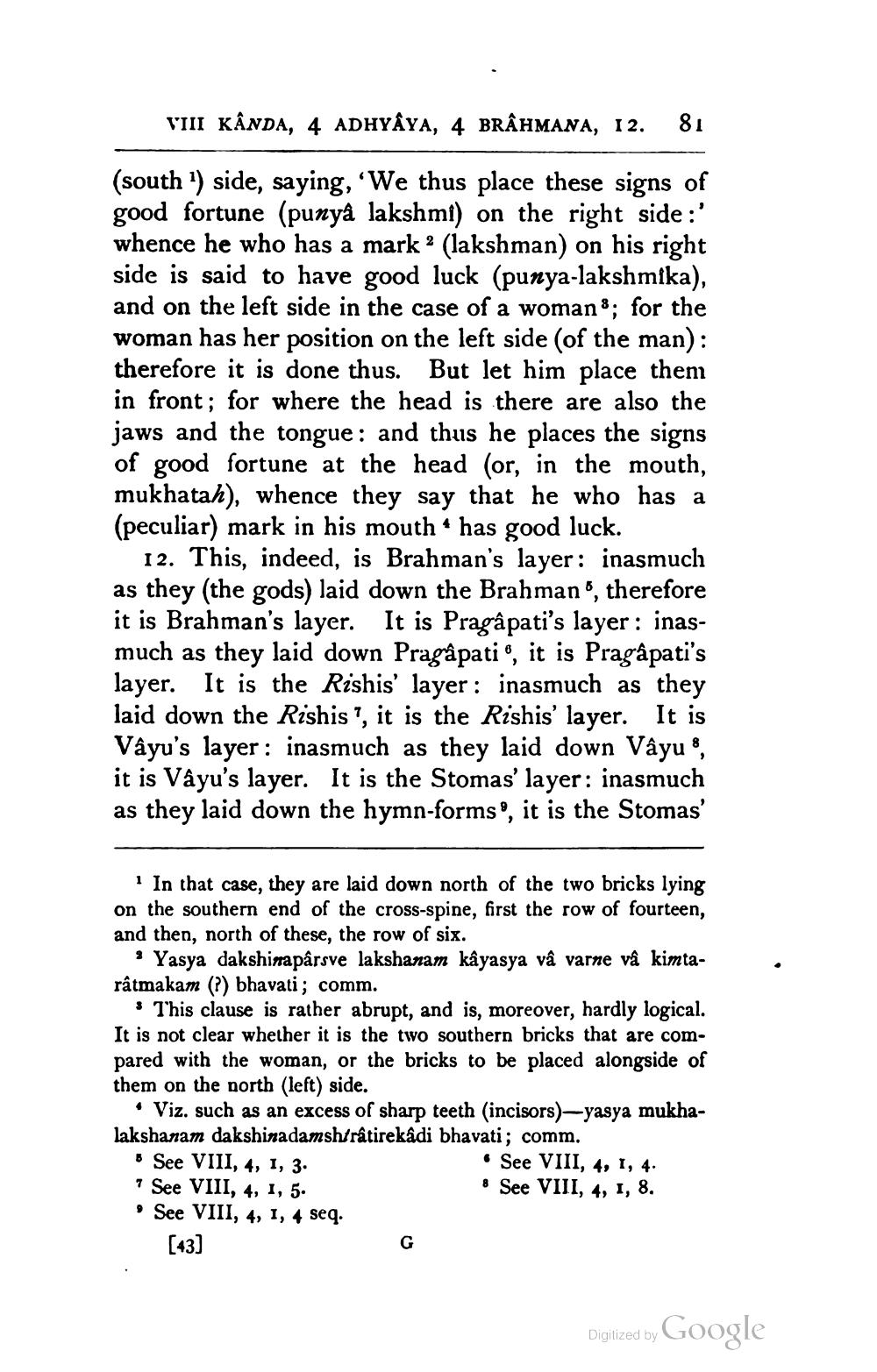________________
VIII KÂNDA, 4 ADHYAYA, 4 BRAHMANA, 12.
81
(south ") side, saying, 'We thus place these signs of good fortune (punyå lakshmi) on the right side :' whence he who has a mark 2 (lakshman) on his right side is said to have good luck (punya-lakshmika), and on the left side in the case of a woman 3; for the woman has her position on the left side (of the man): therefore it is done thus. But let him place them in front; for where the head is there are also the jaws and the tongue: and thus he places the signs of good fortune at the head (or, in the mouth, mukhatah), whence they say that he who has a (peculiar) mark in his mouth * has good luck.
12. This, indeed, is Brahman's layer: inasmuch as they (the gods) laid down the Brahman", therefore it is Brahman's layer. It is Pragâpati's layer: inasmuch as they laid down Pragậpati", it is Pragâpati's layer. It is the Rishis' layer: inasmuch as they laid down the Rishis?, it is the Rishis' layer. It is Vâyu's layer : inasmuch as they laid down Vâyu 8, it is Vayu's layer. It is the Stomas' layer: inasmuch as they laid down the hymn-forms, it is the Stomas'
1 In that case, they are laid down north of the two bricks lying on the southern end of the cross-spine, first the row of fourteen, and then, north of these, the row of six.
. Yasya dakshinapârsve lakshanam kâyasya vâ varne vå kimtarâtmakam (?) bhavati; comm.
* This clause is rather abrupt, and is, moreover, hardly logical. It is not clear whether it is the two southern bricks that are compared with the woman, or the bricks to be placed alongside of them on the north (left) side.
• Viz. such as an excess of sharp teeth (incisors)-yasya mukhalakshanam dakshinadamshtrâtirekâdi bhavati; comm. * See VIII, 4, 1, 3.
• See VIII, 4, 1, 4. See VIII, 4, I, 5.
& See VIII, 4, 1, 8. • See VIII, 4, 1, 4 seq.
[43]
Digitized by Google




